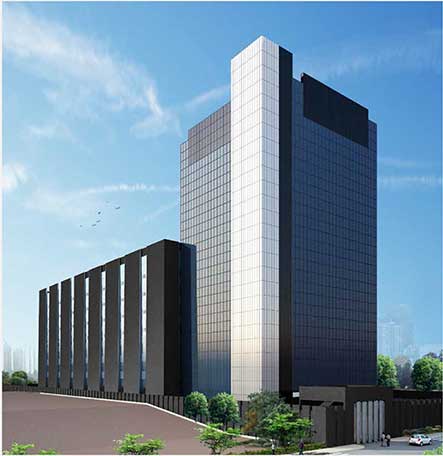|
Listen to this story
|
Pali, a small city in Rajasthan with a total population of about 230,000, faces water crisis every year. So much so that the city administration is forced to fetch water in special trains from the neighbouring city of Jodhpur. Barely 300 km away, however, are a few data centres in Jaipur, where the daily water consumption supersedes the entire city of Pali.
Why do data centres need water?
Any ICT equipment (devices that store data) generates heat. To counter this, most devices have a cooling mechanism. For example, our laptops use heat pipes in which a fluid boils and goes to a comparatively colder region to transfer heat. Data centres too have to maintain similar cooling mechanisms, but on a massive scale.
An average of 20-22°C is the ideal temperature for Data centres to operate, but in India the average temperatures can soar up to 40-45°C during peak summers. The heat generated by ICT equipment at data centres ends up adding to it. To counter this, data centres employ various methods to bring the temperature down.

Pumped refrigerant and evaporative cooling are a few of the many techniques to cool down an ICT equipment. However, since evaporative cooling uses comparatively lesser electricity and more water, the data centres prefer it. Even a small 1 MW data centre can use up to 25.5 million litres of water per year, and if that sounds huge to you, big data centres, like as of Google’s, use more than a billion litres of water every year.
Thirsty global cities
The United States accounts for 130 billion litres of water consumed annually, while states like Texas struggle to meet water demands from industrial and residential areas. Ellis County of Texas needs about 57 billion litres of water every year to be distributed to 20 towns in the area, including Red Oak, where Google demands 5.5 billion litres of water per annum for its data centre.
In London, a recent report claimed, data centres used drinking water to cool down their ICP equipment. It was when the Thames, without which it’s difficult to imagine life in London, started drying up, that the people started noticing that data centres were, in fact, using their drinking water. The water company, Thames Water, admitted that data centres were using drinking water, but they didn’t know how much.
According to John Hernon, strategic development manager of the company, data centres do not need potable water and they are looking at other sources. “We know there is an increased demand from data centres, and we have started a targeted exercise to understand how much drinking water is used by them,” he said.
Why the sudden concern?
Due to the high internet usage and the Indian government’s push to go digital, the demand for data centres is higher than ever. According to CRISIL, India’s data centre capacity is expected to grow double in the next three years. As of now, India’s current data centre capacity is 890 MW, which is expected to grow to 1700-1800 MW by 2025.
Growing data centres may be a sign of growing digital infrastructure in India. However, it also will compound India’s water woes. The data centres in future would need billions of litres of water in a country which houses 17% of the world’s population and has just 4% of the world’s freshwater reserves.
Moreover, India is one of the few countries which has started to feel the impact of global warming, and the heat waves, according to a report, will only get intense in the coming years. States like Rajasthan and Nagaland have already started to face severe droughts due to rising temperatures and low rainfall.
What Indian government is doing
Unfortunately, there is no data available on how much water data centres in India (or globally) use, and while the Indian government has made a policy called Data Centre Policy 2020, even that has failed to address the issue of water consumption by data centres so far. In the entire document, there is just one mention of water, and that is directing state governments to provide easy access to water for data centres.
According to a 2019 Niti Ayog report, more than 600 million people in India are water-deprived. Also, more than 21 cities, including Chennai, Hyderabad, Delhi and Bangalore, exhausted their groundwater resources in 2021.



















































































